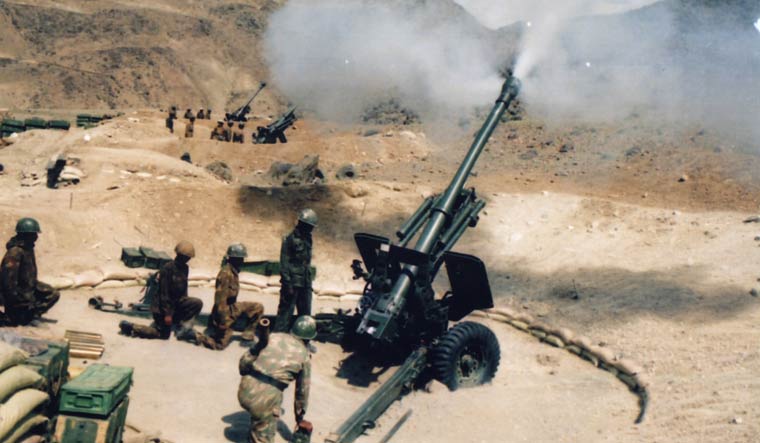It was one of history's smallest wars. Neither side used even a hundredth of the firepower available at its disposal. It lasted just nine weeks, and was fought over just a few hundred square kilometres. Viewed thus, Kargil was not even a war.
But, for strategic thinkers and military historians, it was a unique war that changed all the precepts of strategic thinking since Hiroshima. The world saw for the first time that two nuclear powers could fight a conventional war and prevent themselves from crossing the unthinkable threshold. The credit for spelling this out as a doctrine should go to then defence minister George Fernandes and Army chief general V.P. Malik.
Throughout the Cold War, which lasted from the end of World War-II till the break-up of the Soviet Union in the early 1990s, the US and the USSR behaved as strategic adversaries, but never militarily confronted each other directly. The situation was no different with the other nuclear powers—Britain, France and China. None of them fought the other.
Nearly five decades of this Cold War behaviour had led strategic thinkers and military historians to assume that a conventional war was not possible among nuclear powers. The logic, crudely put, was that the one who thinks he is losing would use the bomb.
Limited wars had been fought since ages, but Kargil was perhaps modern history's most limited war.
Wars can be limited in duration, geographical scope and scale, employment of forces, military objective and so on. Kargil was an extremely limited war going by all these parameters. Either side could have prolonged the conflict, but did not. Neither side used all available force and firepower. In fact, an entire military arm, the navy, remained unused.
Either side could have widened the conflict to other areas such, but did not. Either side could have kept a military objective of seizing the rest of Kashmir from the other side, but did not.
Kargil was 'limited' from another point of view, too. That both sides had the option of using the nuclear bomb, but did not. The Fernandes-Malik doctrine was given a strategic shape during Operation Parakram, following the attack on the Indian Parliament in December 2001. India now used the doctrine to warn Pakistan (that it could still fight a conventional war and win it) and also to reassure the world (that the bombs won't be used).
There was a third aspect, too. Pakistan had been waging the low-intensity conflict in Kashmir on the basis of a doctrinal belief that India would not wage a conventional war against acts of insurgency.
Kargil changed all that. Against Pakistan's 'militarised' insurgency, India acted with conventional military power. Tactically, too, Kargil had its piece for the military thinker. For the first time, artillery was used as the direct-firing weapon. Traditionally artillery guns had been used for hitting enemy beyond the horizon, often beyond the hills, the fire being directed by forward observation posts (FOPs) or aerial observation posts (AOPs).
In Kargil, Pakistan used its artillery in the conventional manner to hit Indian convoys and Indian gun positions. Insurgents sitting in the hills as FOPs directed the Pakistani gunners. But Indian gunners, with no FOPs, fired directly at the targets instead of hitting Pakistani gun positions.
also read
- It's now clear Pakistan Army tortured Indian soldiers during Kargil war, says Captain Vikram Batra's father
- ‘Pakistan fighters may have intruded into Kargil in 1998 summer, a year before war began’
- 9km from LoC, Modi thunders: 'Pakistan hasn’t learnt from history'
- Pak has not learnt from history; Army will give befitting reply to patrons of terrorism: Modi
The war was a unique experience for the Indian Air Force, too. In a conventional war, they would have crossed all borders and lines of control, but in Kargil, the Indian Air Force was asked not to cross the Line of Control (LoC). Since most of the enemy was sitting almost on the Line of Control, fighter pilots had to develop new angles of attack by which they had to deliver their payload and quickly turnaround. There were two dangers—one, of crossing the LoC, and two, of hitting a nearby hill.
Military historians would say this was not new. The US Air Force had to operate within similar constraints during the Korean War. They had to bomb the enemy supply lines in North Korea, but were told not to cross the Yalu river and enter mainland China. But then, it was fairly easy for US pilots to bomb near the North Korea-China borders and return. There were no hills around where the planes could go and hit.



